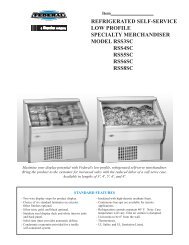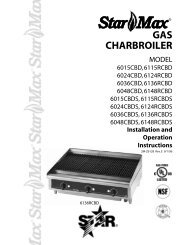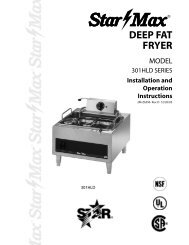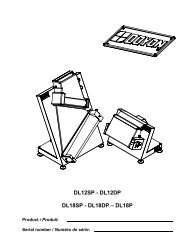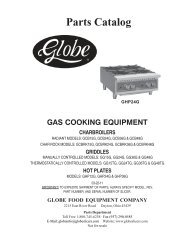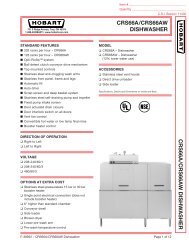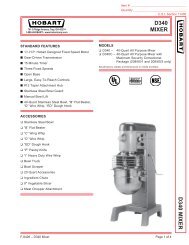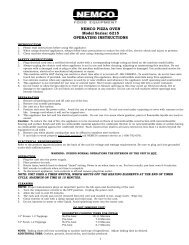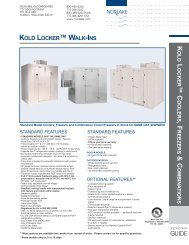ICE MACHINES Q-Model Service Manual
ICE MACHINES Q-Model Service Manual
ICE MACHINES Q-Model Service Manual
- No tags were found...
Create successful ePaper yourself
Turn your PDF publications into a flip-book with our unique Google optimized e-Paper software.
Section 7Refrigeration System<strong>ICE</strong> FORMATION PATTERNEvaporator ice formation pattern analysis is helpful in icemachine diagnostics.Analyzing the ice formation pattern alone cannotdiagnose an ice machine malfunction. However, whenthis analysis is used along with Manitowoc’sRefrigeration System Operational Analysis Table, it canhelp diagnose an ice machine malfunction.Improper ice formation can be caused by any number ofproblems.Example: An ice formation that is “extremely thin onoutlet” could be caused by a hot water supply, a dumpvalve leaking water, a faulty water fill valve, a lowrefrigerant charge, etc.ImportantKeep the water curtain in place while checking theice formation pattern to ensure no water is lost.2. Extremely Thin at Evaporator OutletThere is no ice, or a considerable lack of ice formationon the outlet of the evaporator (tubing outlet).Examples: No ice at all on the outlet of the evaporator,but ice forms on the intlet half of the evaporator. Or, theice at the outlet of the evaporator reaches 1/8" to initiatea harvest, but the intlet of the evaporator already has1/2" to 1" of ice formation.OUTLET<strong>ICE</strong>1. Normal Ice FormationIce forms across the entire evaporator surface.At the beginning of the freeze cycle, it may appear thatmore ice is forming on the intlet of the evaporator thanon the outlet. At the end of the freeze cycle, iceformation on the outlet will be close to, or just a bitthinner than, ice formation on the intlet. The dimples inthe cubes at the outlet of the evaporator may be morepronounced than those on the intlet. This is normal.The ice thickness probe must be set to maintain the icebridge thickness at approximately 1/8". If ice formsuniformly across the evaporator surface, but does notreach 1/8" in the proper amount of time, this is stillconsidered normal.INLET<strong>ICE</strong>SV1576Figure 7-8. Extremely Thin Ice Formation atEvaporator OutletPart No. 80-1100-3 7-11




